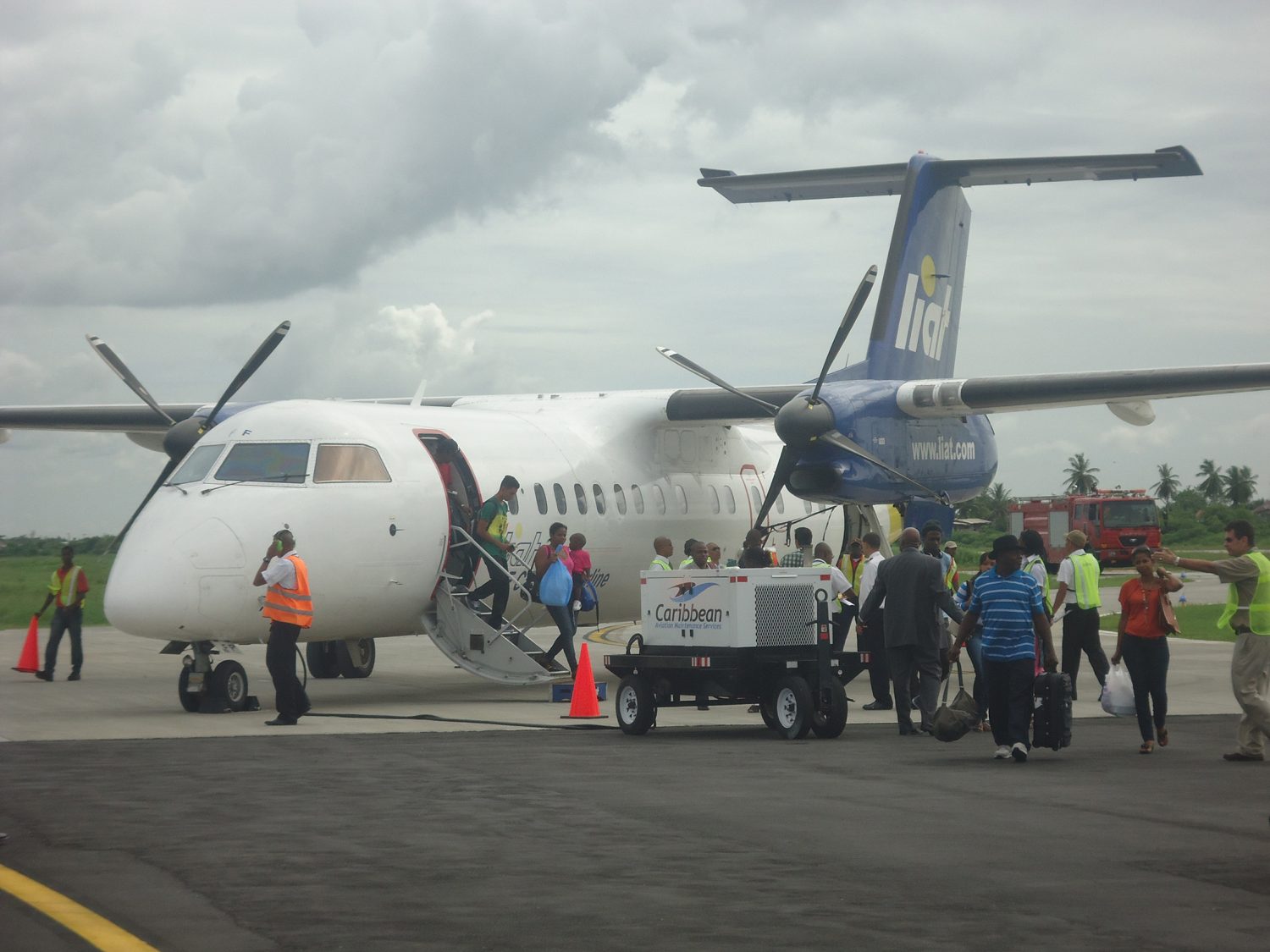The EF Correia International Airport is a privately – operated Airport under a Lease Agreement with government entered into in November 2001, operating in accordance with the Civil Aviation Laws of Guyana and in compliance with all the International Regulations and standards governing an International Airport. To grasp the enormity of its development over the past 16 years and apprehend its future growth and importance to Guyana’s aviation sector, it’s necessary to understand from whence the Airport came.
Origins of the Airport
In the 1950s, Ogle Airport with a small airstrip housing crop duster aircraft for the sugar industry and a burgeoning privately owned domestic light aircraft charter business serving Guyana’s hinterland, mining, agriculture and timber business operating under minimum national civil aviation regulations.
By the mid 60s/70s, the government owned and operated Guyana Airways Corporation (GAC) then began operating a scheduled Twin Otter passenger service to hinterland destinations. Subsidized by the government, GAC became unsustainable and the private operators stepped in to fill the gap. However, when the International Civil Aviation Organization (ICAO) audited the Airport in the early 90s, the Airport was ruled unsafe and was threatened with closure.
In 1993, a UNDP/ICAO funded Aviation Master Plan led to government sanctioning an IDB financed Feasibility Study by the Norwegian company Norconsult. The Study recommended privatization of the Airport and the construction of a 4,000 foot runway to serve as a domestic and regional airport and international port of entry, subject to compliance with ICAO standards.
By then, the Airport had become indispensible to the country’s domestic air operations.
Public/Private Partnership
It’s history now that a consortium of five private aviation companies formed Ogle Airport Inc. and contracted in 2001 to manage, operate and finance the development of the Airport as “a public aviation facility”. The government, in 2003, concurrently leased some 400 acres of land for the Airport.
What is, today, the EF Correia Inter-national Airport, so renamed by President David Granger in May 2016, represents an over one billion dollar (G$1B) private sector investment in a public/private partnership with government.
Extraordinary Growth
The Airport has displayed extraordinary growth into, demonstrably, the busiest Airport in the Caribbean with, in excess, of 130 flight movements a day and functioning as the domestic hub for the country’s hinterland and coastal aviation destinations.
At the time of writing this article, the Airport is home to some thirteen (13) domestic aviation companies, four (4) operating internationally, two (2) helicopter operations, four (4) maintenance operations, two (2) international commercial fuel facilities and four (4) companies capable of providing Ground Handling Services. The Airport features an international terminal and six (6) domestic passenger/cargo terminals, approximating a total investment of six billion dollars (G$6B) in fixed assets, aircraft and equipment.
The Airport is also home to two (2) aviation engineering training schools, the Art Williams & Harry Wendt Aeronautical Engineering School and Air Services Limited Aeronautical Engineering School as well as Air Services Limited Flight Training school.
Lifeblood of Hinterland Development
It is no exaggeration to say that EF Correia International Airport is the lifeblood of our hinterland development and survival. The critical role the Airport plays in servicing and sustaining Guyana’s hinterland development and services, whether mining, agriculture, tourism, forestry, community, government, social and health services, is dramatically demonstrated by the fact that, on an average day some 62 flights service some 53 separate destinations carrying some 500 passengers and over 46,000 lbs of cargo, an increase of approximately 135,000 passengers and 12 million lbs of cargo, over the past 16 years.
In addition to the Airport’s essential role in connecting our capital city and coastal population to our hinterland, the Airport plays an expanding role in linking our country to our regional destinations with scheduled daily passenger and cargo flights to Barbados, Trinidad & Tobago and Suriname through LIAT, GUMAIR, Trans Guyana Airways and DHL. These flights provide a regional link to ongoing flights to our hinterland. On an average day, the Airport turns over some 200 passengers and over 2,000 lbs of cargo.
Trans Guyana Airways has recently introduced a Beechcraft 1900 service to its fleet which now provides chartered direct flights to regional destinations extending to Puerto Rico.
In 2009, a European Union funded grant of 1.5 million Euros as part of a CARICOM Regional Airport Development Programme, served to extend the Airport’s runway to 4,200 x 100 feet, meeting ICAO Code 2 runway compliance, enabling the Airport to accommodate regional carriers like LIAT and CAL. The regional flights connecting Guyana to its CARICOM partners are of particular benefit to the Community’s Head-quarters located within a 10-minute drive from the Airport and the neighboring Arthur Chung International Conference Centre.
The Future
The Airport has grown today to become the Airport of choice for regional passengers in and out of Guyana, both for the convenience it offers and its proximity to the capital city.
In the few short years of its existence as Guyana’s second international airport and expanding domestic aviation hub connecting our hinterland to the coast, the EF Correia International Airport has significantly improved national aviation safety and aviation services and has become an invaluable link of our capital city to the Caribbean and beyond. So what does the future look like?
The Airport is now re-designated a Code 3C runway which has been extended beyond 1,199 meters. But LIAT’s 70 passenger aircraft has already stretched the limits of the pavement design confined to 1,000 operations per year.
The recent offshore discovery of oil and gas catapulting Guyana into a future amongst the largest oil producing countries in the world will make increasing demands on the Airport to accommodate expanding traffic with carriers using larger and heavier aircraft and the introduction of helicopter services. The Airport has, therefore, already begun planning a third phase of development.
This new phase of development, in addition to its domestic aviation services, will require the construction of a separate international facility on the northern side of the Airport involving a new international terminal with all of the associated facilities, bridges, access roads and car parks and a redesigned longer and wider runway supported by stronger and widened taxiways and aprons.
The Airport, with over 500 employees, has created employment for the surrounding communities and is opening up opportunities for investment in a range of supporting services from restaurants to hotels, shops, taxi services, light industry, manufacturing, fabricating, administrative offices, security services, to name a few.
This article was prepared by the management of Ogle Airport Inc. at the request of The Guyana Review.










